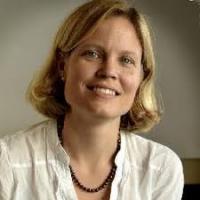Diana Laird, PhD was awarded a substantial grant from the W. M. Keck Foundation for her work into ovarian longevity.
The Eli and Edythe Broad Center of Regeneration Medicine and Stem Cell Research spoke with Dr. Laird about her research:
Diana Laird Looks to the Ovary to Hack Aging
Naked mole rats are unique in the small animal kingdom, not for their hairless (and rather alarming) appearance, but because they live 10-times longer than their rodent relatives. What’s more, the females don’t go through menopause, meaning they can reproduce for their entire 30-year lifespan.
Diana Laird, PhD, an associate professor of Obstetrics Gynecology and Reproductive Sciences at UC San Francisco and a member of the Eli and Edythe Broad Center of Regeneration Medicine and Stem Cell Research, thinks the naked mole rats’ long lifespan and reproductive span are linked and that the ovary may hold the secret.
Thanks to a $1 million grant from the W.M. Keck Foundation, Laird will study what’s special about naked mole rat ovaries. Working in collaboration with aging, metabolic, gynecologic, and naked mole rat experts at UCSF, Cornell University, and the University of Toronto, Laird will create induced pluripotent stem cells from naked mole rats and develop them into early ovarian cells. Laird will then inject the cells into mouse embryos to create a chimera—an animal that is part mouse, part naked mole rat.
This isn’t the first time scientists have made the connection between the ovary and longevity. After women go through menopause they experience a marked uptick in diseases associated with aging. And in one early experiment, scientists transplanted the ovary from a young mouse into an old mouse, extending its lifespan by 40 percent.
Laird hopes to find out if the naked mole rat ovary can enhance the longevity of typically shortlived mice, and if so, what special signals the organ secretes to do so. In addition, UCSF coinvestigators Andrew Brack, PhD, and Saul Villeda, PhD, will look at skeletal muscle cells and hippocampal cells in the brain—two tissue types that have been shown to be rejuvenated in past aging experiments—to see if they are also affected by the ovary.

